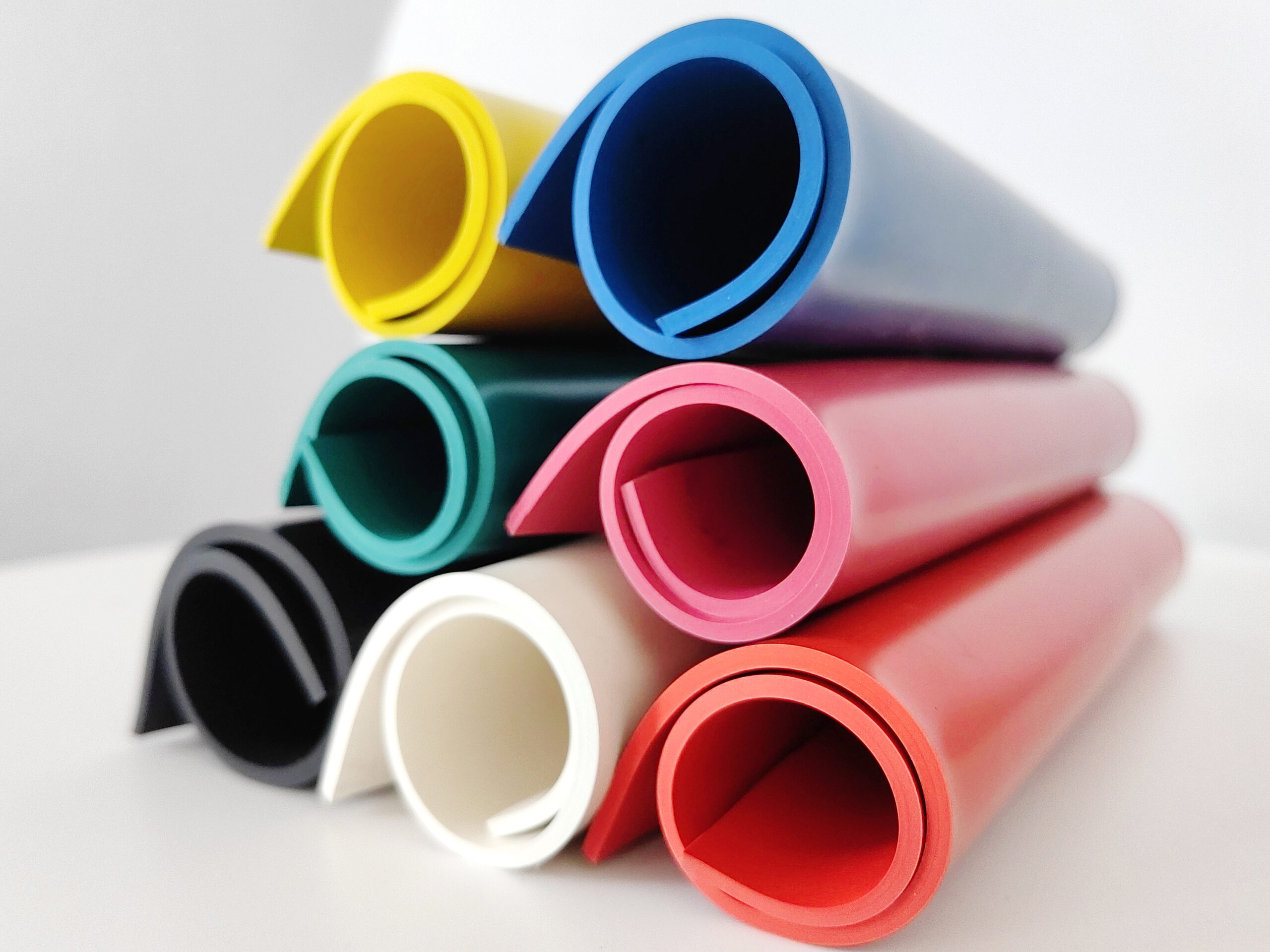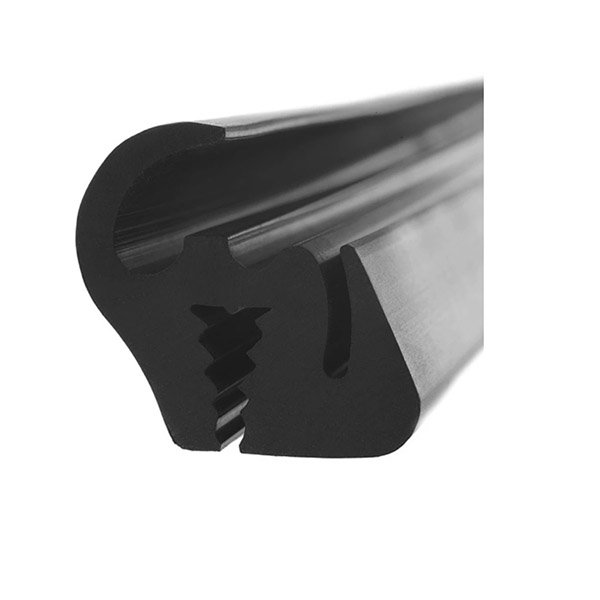FKM and EPDM are generally two familiar names in the rubber industry. They are prevalent because they are always durable and reliable. But what makes them different? And more importantly, why does that difference matter? This “FKM vs EPDM Rubber” guide can help clear your confusion.
FKM and EPDM are unique types of synthetic rubber with strengths and weaknesses. People usually use FKM because of its good heat resistance, anti-aging properties, and strength. However, EPDM is ideal for insulating, absorbing impact, and weathering conditions. Each of these rubbers also has its limitations. For example, FKM is expensive, and EPDM needs a slow curing process.
So, why should we care about the difference between FKM and EPDM? The wrong selection of material results in severe problems. Let’s say you are using a FKM rubber in a plumbing system. Although FKM has good oil resistance, it has a lower water resistance. In this case, EPDM offers you better water resistance.
As you can see, each material has a best-fit scenario, and that’s the point. Understanding when to use FKM and when to use EPDM will save your company time and money. This comparative analysis will help you understand these two rubbers with ease.

What is FKM Rubber?
Another name for FKM is fluoroelastomer, and people also call it fluro-rubber. FKM is one of the most commonly used synthetic rubber materials designed for the harshest working conditions. It is made by VDF or vinylidene monomers. During manufacturing, a high quantity of fluorine and carbon-based monomers are used.
What makes FKM rubber stand out? First of all, it is very stable at high temperatures. FKM can work up to 250 degrees Celsius. As a result, people often prefer this material for applications where traditional rubber might quickly lose its grip.
- FKM rubber is durable against corrosion and can resist chemicals, flow acids, oil, alkalis, etc.
- FKM rubber has a very low friction coefficient and is widely used for sealing and rolling parts.
- This rubber also offers excellent insulation resistance.
- FKM rubber also works excellently against weather, fire, UV, and vacuum.
So, where would you find FKM rubber? A prime example is in the automotive sector. The car fuel systems and parts of car engines, trucks, and other heavy vehicles also use FKM rubber. As you know, FKM is well-resistant to fuels, oils, and high temperatures; it is the go-to option for fuel injectors, fuel tanks, and oil systems. Likewise, you will also find its use in the aerospace industry.
Moreover, FKM rubber can be used in industrial items and equipment, chemical industries, and automobiles. High-pressure pumps, heat exchangers, and industrial reactors are common in these cases.

What is EPDM Rubber?
EPDM stands for Ethylene Propylene Diene Monomer. Regarding rubber material, EPDM is one of the most popular materials. EPDM rubber is primarily designed to be resistant to weathering and ozone. Because of this, this rubber material is a preferred choice for outdoor sealing.
One of the best benefits is that EPDM is water-resistant. In contrast to other rubbers, EPDM is impressive in working in wet conditions. As a result, people prefer EPDM for applications involving water and steam exposure. In addition, EPDM rubber is flexible and maintains the same behavior in diverse temperature ranges.
EPDM is a great outdoor choice because of its UV, ozone, and water resistance balance. Some critical properties of EPDM are as follows:
- EPDM rubber does not deteriorate when exposed to direct sunlight for long. It is also ideal for people exposed to ozone. You’ll not see it crack or weaken, which is perfect if you put it outdoors.
- EPDM rubber also performs exceptionally well with water and steam.
- This rubber material is flexible at a wide range of temperatures.
- EPDM has reasonable heat stability, operating between -40 to 150 degrees Celsius.
EPDM rubber products find extensive uses in outdoor settings. They can be used on roofing membranes, window seals, and plastic playground areas. Also, people use this rubber material widely in HVAC and potable water systems. One place where you won’t find EPDM rubber, though, is in oil or aggressive chemical handling. Note that it can not withstand petroleum-based fluids.
FKM vs EPDM: Key Differences
If you are on this page, you might be looking for the right choice for your project. This choice usually comes down to knowing the pros and cons of each rubber. Here are some of the most important differences that will help you choose the right option for your project.
FKM vs EPDM Rubber: Chemical Resistance
Are you working with harsh chemicals or things made from oil? FKM rubber often replaces many rubber types in these situations. It is specifically known for its fantastic chemical resistance and is frequently used with oils, fuels, and industrial chemicals.
In contrast, EPDM is not very resistant to oils and fuels. The only substances that this rubber can withstand are alcohol, weak acids, and alkalis. EPDM exposure to oils or hydrocarbon-based fluids will quickly break it down.
So, FKM is the one you should use if you have to work with oil, grease, or fuel. However, EPDM might be a better choice if you work in a place with only light chemicals.
FKM vs EPDM Rubber: Temperature Resistance
The next thing you can consider is the temperature rating. Indeed, FKM is the winner here. It is widely known that FKM rubber products are highly resistant to heat. Usually, FKM rubber seals can endure heat up to 250 degrees Celsius. FKM is typically an ideal option for places that generate high heat.
EPDM, on the other hand, has its temperature limits. It can generally withstand 150 degrees Celsius, so this rubber is a good choice for low—to moderate-temperature applications.

EPDM vs FKM Rubber: Weather Resistance
Except for chemicals and heat, you should also consider the factor of weather or environment. Regarding exposure to weather elements, EPDM is hard to beat. This rubber material is particularly suitable for outdoor applications.
On the other hand, FKM can not endure prolonged UV and ozone exposure. It doesn’t hold up quite as well in long-term sunlight exposure as EPDM. Therefore, if your application faces limited or no direct light, FKM can work fine.
EPDM vs FKM Rubber: Water Resistance
Water and steam can often be very problematic. In this case, the material’s water absorption rate is very important. EPDM has a particular reputation for its water and steam impermeability. Due to this, it is used in plumbing and heating/ventilation/air conditioning applications. This rubber is also prevalent in sealing and gasket jobs.
FKM, however suitable for oils and fuels, is not favorable for water and steam. Exposure to long periods of a steam environment degrades FKM progressively with time. Because of this, EPDM seals and gaskets are better for plumbing, water treatment, and steam.
FKM vs EPDM rubber: Cost and Availability
Regarding price, EPDM rubber is the winner against FKM rubber. The cost of EPDM rubber is less than that of FKM rubber, so EPDM is actually very feasible for any project. For applications where EPDM can handle the job, choose FKM over it. EPDM is also easily obtainable and highly inexpensive, mainly used in large quantities.
However, FKM is more chemically stable and heat-stable than EPDM rubber. Of course, it is a premium version. Even if it may not be as accessible as EPDM, it has the advantage of being perfect for extreme conditions. It is expensive and not much more available than EPDM.
FKM vs EPDM Seals: Which to Choose?
You are already familiar with the critical properties of EPDM and FKM rubber. When you choose between these two, you must identify the pros and cons of each material. You know each rubber here has its strong suits and drawbacks.
Pros and Cons of FKM Seals
Pros
FKM seals work well in harsh environments. Their greatest strength is their resistance to chemicals, lubricants, and fuels, making them ideal for the automotive and aerospace sectors.
FKM seals can resist temperatures up to 250 degrees Celsius. It won’t break in high-heat environments. As a result, you can get a reliable performance in applications.
Cons
FKM rubber seals are often more costly than EPDM rubber seals, which may disadvantage cost-conscious applications. They also have reduced water resistance. Thus, they may not be the greatest option if your application requires a lot of water or steam.
Pros and Cons of EPDM Seals
Pros
EPDM rubber seals work excellently against weather exposure. They resist UV radiation, ozone, and normal outdoor conditions. Consequently, EPDM materials are widely used in HVAC, sealing, and plumbing applications. EPDM is also relatively cheap and flexible.
Cons
EPDM rubber seals are not oil-friendly. If exposed to petroleum-based substances, EPDM will degrade quickly, making them unsuitable for fuel systems. Also, EPDM rubber is not as heat-resistant as FKM rubber. While EPDM is okay to use at moderate temperatures, the FKM rubber seal is better for high heat.
Contact Us Today!
Seashore Rubber produces all types of rubber seals and gaskets. EPDM and FKM rubber seals are two of the popular ones. You can find our customer support team if you need EPDM
